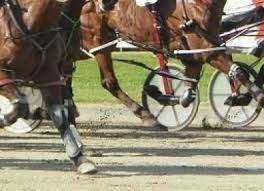
One feature for which Hurt became synonymous, along with his signature bow tie, were his “impertinent questions” columns, examining many facets of the sport.
Well, I, too, have some “impertinent questions” and, as a tribute to Hall of Fame journalist Clyde Hurt and all other Hall of Fame members, these questions have to do with the glaring omissions in our sacred and hallowed institution known as the Hall of Fame.
First, this is a tough road to navigate.
A worthy analogy would be to turn the clocks back a century when the automobile was gaining steam and traveling handsomely through roads that were, for the most part, devoid of traffic jams and having to be careful enough to avoid horse drawn carriages!
Today, some of those roads are, virtually, unchanged but the number of cars has increased from around 200,000 in 1909 to 2,250,000 seven years later and, today, there are over 286,000,000 cars and, thus, we have a traffic nightmare in many areas.
True, since those century old days, many roads have been widened and upgraded to try and alleviate the rush and crush and the 1956 legislation funding the construction of our interstate system has greatly helped…but try and get through Washington, D.C. or the New York City area or Chicago or any city that has had a population explosion and, well, it’s a traffic nightmare.
So, what’s that got to do with our great sport?
 Amazingly, there are similarities.
Amazingly, there are similarities.
Back when I first started enjoying our sport, Billy Haughton, Buddy Gilmour, Del Insko, Bob Farrington and Harry Burright, among a few others, were the icons in winning races with none of those great drivers ever winning as many as 200 races in a season until Farrington did it in 1961 with 201. (Levi Harner won it one year with 105 wins!)
Even on the fabled Grand Circuit, a driver earning over $300,000 was a rare accomplishment with only John Simpson, Sr., Delvin Miller and Stanley Dancer able to do it by the time my first writing was printed in 1964.
Only one driver had over 2,000 lifetime wins (Haughton, 2,104) and there were only 25 drivers that had 1,000 wins or more. (Note: only two are alive today, Del Insko, 92, and Lou Rapone, 98.)
So, what’s that got to do with all of this hoopla?
Well, 18 of those first 25 inductees in the “”One Thousand” Club are in Goshen, New York’s Harness Museum and Hall of Fame with Hugh Bell, Tommy Winn, James Jordan, Eddie Cobb, Lou Rapone, Edgar Leonard and Harry Burright—all deserving pioneers in our sport—on the outside looking in.
Oh, there IS a Burright in the HOF…the great Neva “Grandma” Burright, a legend in her own right.
Of course, the stats of all those legendary horsemen are passe’ today and a good many of yesterday’s stars are forgotten just like baseball’s Dee Fondy, “Handsome” Ransom Jackson, Eddie Miksis, Roy Smalley, Minnie Minoso and Frankie Baumholtz…or football’s George Blanda and Paul Hornung.
On the training side of the harness racing ledger, it’s a very tough road to the Hall Of Fame as there are only 11 trainers with career purse earnings of over $60,000,000 with only four elected to the HOF.
There are some 25 trainers listed with more than 2,500 wins (since USTA records were established) with eight trainers over 4,000 with only one in the Hall—Ron Burke.
Today, 20 drivers have over 10,000 career wins and three more are knocking hat the door…and a good handful of them are NOT in the Hall of Fame.
And the number of drivers with 5,000 or more wins is 135, an incredible achievement in itself…but if even one gets on the HOF ballot it will be a miracle.
The same is true for our equine athletes.
My G-d! Niatross was an icon went he stopped the timer in 1:49.1 at Lexington in his TT.
It’s nothing but a “ho-hum” occurrence these days and horses with marks UNDER 1:47 are going to have a tough time earning a spot in our Hall Of Fame. (We have 17 such horses on the books to this very day and 15 more at 1:47.
Of those 32 superior pacing equine athletes, five are in the Hall of Fame with three more names popping up as possibilities—one a sure thing! (Bulldog)
The once thought impossible 1:50 trotting mile has been eclipsed by 17 horses with another six right at 1:50…ONE is in the Hall of Fame—ONE—Hannelore Hanover.
Surely, Atlanta, Manchego (both $3,000,000 winners) may be considered…and so might Greenshoe and others down the road but, right now, they are in the traffic jam, too.
I doubt very much that the fastest trotter ever—Homicide Hunter (1:48.4) will ever even be considered.
Yes, just like our roads, our sport is clogged with so much Hall of Fame deserving talent that, with the current system, it’s only going to get worse as there are dozens and dozens that fit Hall of Fame criteria and, as we go on, the traffic jam in talent is only going to get worse.
After all, there’s only room for two or three per year in each category offered.
Yes, Main Street in Goshen, New York needs more land to expand the Hall of Fame and the museum needs some serious funding to make it happen.
So, I’ve said my piece, which leads me to the first impertinent question.
Yes, one of the greatest Major League Baseball players, Pete Rose, was banned forever and denied HOF status and others in sport have been sanctioned and denied as well…but aren’t we a nation of forgiving, especially when years have gone by and the then guilty party has paid the price and been allowed back to ply his trade…and very successfully, I might add?
With that said…

Why can’t trainer Brett Pelling be considered for the Hall of Fame?
Having won his fifth Meadowlands Pace with Confederate this semester—the others being Rocknroll Hanover (2005), The Panderosa (1999), Dream Away (1997) and David’s Pass (1995)—Pelling has trained some of the best horseflesh in history over the past 30 years, including Test Of Faith, Allywag Hanover, Papi Rob Hanover, When Dovescry, I Am A Fool and Western Terror, to name a few.
Yes, he has slowed up a bit from his hectic pace in the early 2000’s, but his “batting average” as a trainer has dipped below .300 on only two occasions during his three decades as a trainer and his batting average the past three seasons has been “Ty Cobb” like—.461, 475 and, thus far in 2023, .445.
Racing against the best stakes horses in training year-after-year, his win percentage is right at 20% with close to 2,000 training wins with success at some 20 tracks coast-to-coast and north of the border.
Can we not have a heart?
Second impertinent question…
Why isn’t Bill Wick in the Immortals Hall of Fame?
Bill Wick? Who is Bill Wick, you ask?
William “Bill” Wick was considered one of the premier farriers (blacksmiths) in standardbred racing.
Born a bit more than a century ago—March 20, 1922—and, in his late 20’s, he began shoeing horses.
He traveled the Grand Circuit and was so successful that he was sought by the “who’s who” in racing to bring out the best when it came to the premier events in our sport, including the Hambletonian and Little Brown Jug.
During the 19 years Wick was active on the Grand Circuit, he shod 19 Hambletonian winners in DuQuoin, Illinois and 18 Little Brown Jug winners in Delaware, Ohio.
For the next two decades, he spent his winters at Pompano Park plying his trade and his summers at Vernon Downs, retiring in 1993.
His success was all the more remarkable after a 1968 auto accident took the lives of his wife, Jeanette, and two youngest children, Paul and Jeffery.
In 1973, Bill wedded Lucille Houston and they were married until his passing in 2015.
He was elected to the Florida Harness Racing Hall of Fame in 2010 and his worthiness into our sport’s Hall of Fame is unquestionable and overdue.
Third impertinent question…
Why isn’t “Deuce” in the Communicators Hall of Fame?

Hugh Ducey has recorded as much or more history of our sport than just about any photographer.
Yes, the great George Smallsreed caught much of the Grand Circuit history and Mark Hall has continued with phenomenal work over the years—both in the Communicators Hall of Fame—but Deuce’s career in photography goes back more than a half century covering President Ford’s speech in Newark, New Jersey and sports events covering The New York Knicks, Stanley Cup Playoffs and the New York Rangers at the “Garden.”
From there, he was hired by Jim Raftery (Turfotos) and, when The Meadowlands opened in 1976, Hugh Ducey became the “voice of harness racing in pictures,” including horses, owners, trainers and drivers.
In 1995, he joined the staff of The Hambletonian Society and the Breeders Crown, recording the memories that will last many of us a lifetime.
He continues to work for the Hambletonian Society preserving the magic historical moments in our sport.
Fourth and final impertinent question…
Why isn’t John Curtin in the Communicators Hall of Fame?
John Curtin is the pioneer who, 20 years ago, launched HarnessLink, without question, the leading website covering the WORLD of harness racing.
From the U.S.A. and Canada to New Zealand and Australia to the European stage, HarnessLink has developed a unique way of covering racing complete with comprehensive stories, results and replays.

From the U.S.A. and Canada to New Zealand and Australia to the European stage, HarnessLink has developed a unique way of covering racing complete with comprehensive stories, results and replays.
“It was always a dream of mine to gather the media from around the world together…and that’s how it started.”
Robert Kennedy once said, ‘Progress is a nice word, but change is the motivator and change has it enemies,” but John Curtin has overcome the roadblocks and is continually moving the bar higher with a new, unique website HarnessBid, eliminating the typical 4% commission selling horses and, instead, charging a nominal listing fee, saving the seller substantial sums of money.
As for HarnessLink, Curtin says, “We have a great blend of youth and experience who all have their own styles of writing and the ability to breathe life into reporting through their words.
“Yes, we want to breathe life into harness racing!”
So, this Mane Attraction has reached the “wire” and as mentioned earlier, there are continual traffic jams in places like New York City, Chicago, the Washington, D.C. area and most every, major city.
But the biggest traffic jam is on Main Street in the town of Goshen, New York, population 5,762, as many of our great horses, owners, trainers, drivers and breeders may still be “miles” away from getting to the front door of the Hall of Fame and, sadly, many will never get there.
by John Berry, for Harnesslink

 USA
USA Canada
Canada Australia
Australia New Zealand
New Zealand Europe
Europe UK / IRE
UK / IRE



